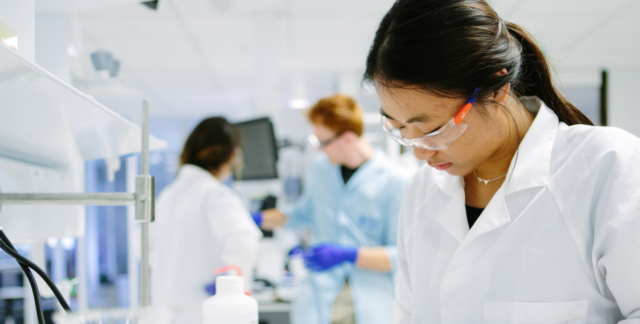Science in Australia Gender Equity (SAGE) welcomes the Pathway to Diversity in STEM Review draft recommendations released this week by Minister for Industry and Science Ed Husic.
Despite decades of effort and investment to improve diversity in STEM fields, women still make up a small minority of those graduating with STEM qualifications, pursuing a STEM career or progressing to senior levels.
The review panel, chaired by Sally-Anne Williams, acknowledged the stifling sector-wide culture that continues to exclude women and marginalised groups, and underscores the urgent need for a coordinated national strategy to attract, retain and progress a diverse and inclusive STEM workforce.
SAGE CEO Dr Janin Bredehoeft said, “we are very pleased to see the draft review’s recommendations align so closely with SAGE’s strengths, and the recommendations made in our submission.”
“The panel has emphasised the need for interventions that address intersectional and systemic barriers to diversity, look at those barriers across the STEM participation life cycle, drive and embed long-term change, and are evidence-based and subject to rigorous monitoring and evaluation.
“These characteristics all form the basis of the SAGE framework.”
The draft review also recommends the establishment of a central entity to improve oversight and coordination of all national STEM diversity initiatives.
“Since its inception, SAGE has been advocating for strategic coordination of the national programs working towards greater diversity in STEM,” said SAGE Chairperson Libby Lyons. “It is absolutely critical that we bring together academia, industry and government to approach this challenge holistically and ensure that different approaches are complementary and effective.”
Dr Bredehoeft also applauded the recommendation that we continue to focus on research to improve outcomes.
“We need better information to ensure that our programs produce the best outcomes for people in STEM careers and for meeting the needs of the labour market.”
“For example, we should be tracking graduates to better understand how individuals and cohorts progress in the workforce, and where the barriers to their participation lie.”
“We can’t just assume that certain approaches work. We need to coordinate meaningful, sector-wide metrics to measure GEDI success, with targets to achieve these metrics and regular, public reporting on progress.”
“We are very pleased that the review recognises that this problem extends beyond a question of gender equity, and promotes programs that account for intersectional barriers faced by diverse marginalised groups, including First Nations peoples, migrant and refugee populations, people with disability, and LGBTQIA+ people.”
SAGE thanks the review panel for its consultation with the sector and for its work in preparing these recommendations. We look forward to the publication of the final review and working with the Government to deliver a robust and coordinated plan to strengthen the diversity in Australian STEM.
—
Media contact
Heather Champion
media@sciencegenderequity.org.au



